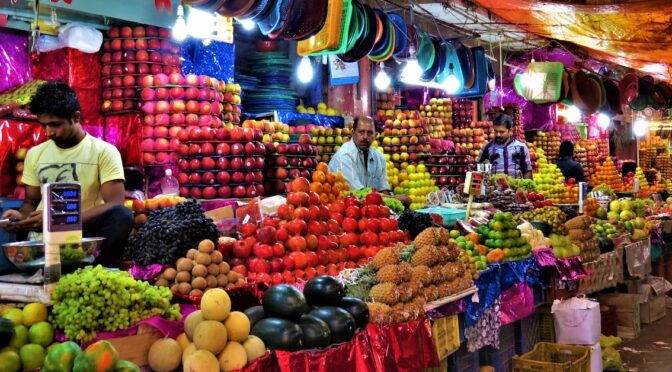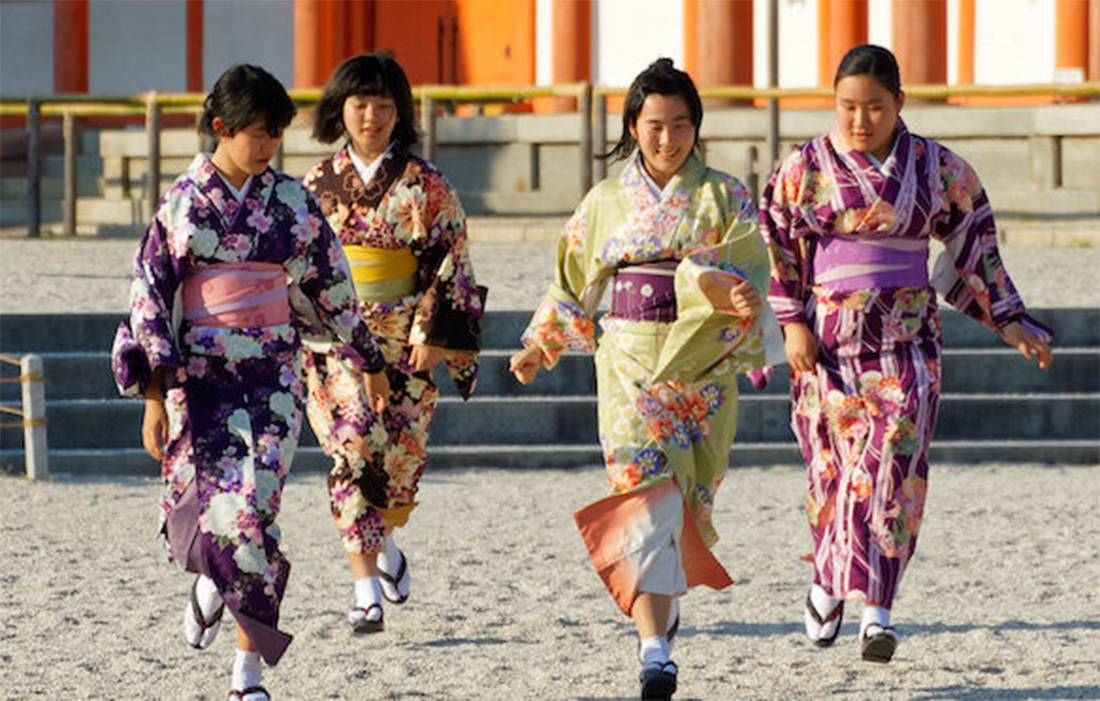Rise and shrine: What to see and where to stay in Kyoto
Beautiful koi ponds in pristine temple gardens, the scent of roasting tea and matcha wafting from rustic low-rises and the sound of a geisha’s wooden sandals clattering down a cobblestone street. This is what many people expect from a visit to Kyoto – and it’s exactly what they get.
Home to 17 Unesco World Heritage Sites, as well as hundreds of temples and shrines, Kyoto embodies an authentic Japan and is the spiritual centre of the country. Forget the high-rise, neon-lit glitz of modern Japan and embrace this magical city. You won’t regret it.
It’s well documented that Japan enforced one of the strictest border controls during the pandemic, and the destination has experienced a tourism boom since it fully reopened in October 2022. It’s at the top of many travel wish lists – and capacity is proving a problem at certain times of year (hello, cherry blossom). Due to the complex nature of a Japan itinerary, clients very rarely book direct – posing a dream scenario for agents. Get to grips with this country now, as its star is only rising among luxury travellers.
Why sell it
To put it simply, Kyoto is an easy sell. Clients keen to travel to Japan will, without doubt, want Kyoto featured on an itinerary. While Tokyo and Osaka are frantically busy cities, Kyoto symbolises a Japan of years gone by. It embraces its heritage, which is on display around every corner. The easiest way to get to Kyoto is on a bullet train from Tokyo. Ensure clients book tickets in advance and reserve a window seat, which affords the best views of Mount Fuji.
What’s new
Prior to the pandemic, Kyoto was inundated with tourists, and locals were becoming increasingly frustrated by the volume of people descending on key attractions, often without care for their surroundings. The pandemic allowed the city to reset and officials are keen to guide new and returning tourists to be more mindful of their interactions around Kyoto. Historic temple Kiyomizu-dera is offering night tours to help counter the congestion of peak hours. Many other sites have introduced lists of ‘pleases’ rather than ‘don’ts’ to help protect the city’s traditional roots and values.
Kyoto’s art museums often get overlooked in favour of the Kyoto National Museum or Kyoto Railway Museum, but they are well worth a visit. Kyoto City Kyocera Museum of Art reopened as the pandemic took hold in 2020 having undergone an extensive three-year renovation project.
On the hotel front, Hotel The Mitsui Kyoto joined the city’s luxury roster in late 2020, while 18-room Marufukuro opened in the former Nintendo headquarters in 2022. In April, Six Senses Kyoto will welcome its first guests in the historic Higashiyama district.
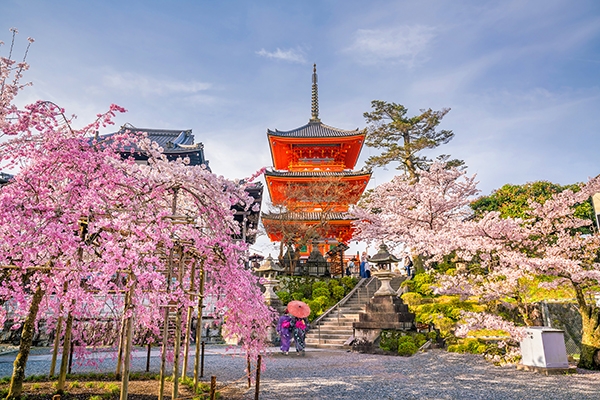
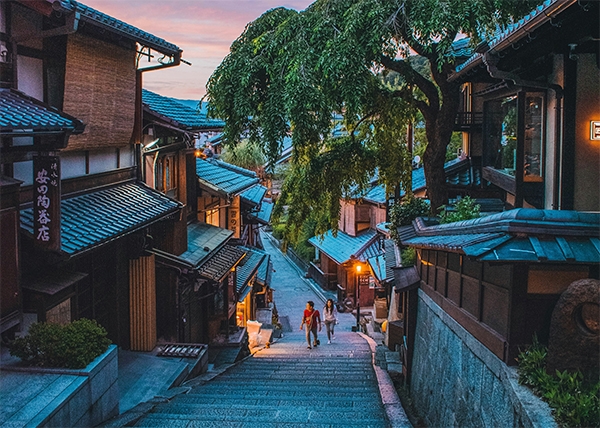
When to go
For the best weather conditions, plan a trip in the shoulder seasons of spring and autumn when temperatures are moderate and pleasant. Be mindful that the former is an incredibly busy time as the pink hues of sakura blossom across the country. Visitors should consider heading to Kyoto in October and November when the foliage turns various shades of red and gold - creating stunning displays that rival the cherry blossom in my opinion.
Kyoto hosts the country’s most famous festival in the humid month of July. Kyoto Gion Matsuri dates back to the ninth century and was originally a religious ceremony. Nowadays the city’s streets are filled with enormous floats that parade throughout the month.
Where to stay
Kyoto is awash with luxury hotels. From big brands such as Aman, The Ritz-Carlton and Four Seasons to smaller, more traditional ryokan properties such as The Shinmonzen and Nanzenji Sando Kikusui – the options for high-value clients are exquisite. All tend to be in keeping with the city’s rustic and traditional aesthetic. Park Hyatt Kyoto opened in 2019 and is a fabulous option, plus the property boasts brilliant views of Yasaka Pagoda.
What to do
I’d put money on Fushimi Inari Taisha being at the top of any visitor’s must-do list. The shrine is at the bottom of Mount Inari, with thousands of burnt-orange torii gates leading visitors to the summit of the mountain. The hike takes about three hours, although many visitors will only complete the initial trails. Visit first thing in the morning or late afternoon to avoid the crowds and fully immerse yourself in this special place. Jetlagged travellers could visit in the middle of the night as it’s open 24 hours.
Each shrine across the city has its own unique stamp and visitors are often seen stamping notebooks, as they make a wonderful souvenir. Four Seasons Hotel Kyoto gifted my two-year-old son a gorgeous notebook, which certainly made visits to dozens of shrines more palatable and exciting.
With images of the epic towering bamboo trees flooding social media, a walk in the Arashiyama Bamboo Forest is another must. Located in the north of the city, the endless vista of bamboos creates an ethereal and other-worldly setting.
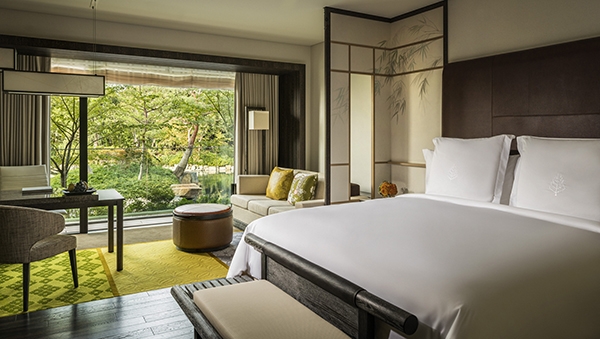

What to see
Visit the historic, charming and atmospheric district of Gion and watch in awe as majestic geishas – or geikos, as they’re called in the city – go about their daily lives. Remember to be courteous and ask for permission before taking their photos, and be mindful that photography isn’t permitted on some private streets. To learn more about ancient geiko culture, book an experience that allows you to watch these talented artists perform and dance.
The city is full of historic shrines and temples, which escaped the devastating bombings that rocked much of the country during the Second World War.
There are more than 1,600 temples and 400 Shinto shrines in Kyoto. The Zen Buddhist temple Kinkakuji (which translates as Golden Pavilion) is one of the most beautiful and most visited, with its golden walls quite literally glistening in the sunshine. Kenninji has the most stunning garden and a spectacular mural of twin dragons on its ceiling, while Chion-in is one of the grandest. Located in the Higashiyama district, it is home to Japan’s largest temple bell.
Kiyomizu-dera, which means pure water temple, is a place of serenity and peace, and one of my favourite spots in the city. Located in a wooded hill to the east of Kyoto, the temple lies on the site of the Otowa Waterfall. Visitors come here to drink from the three streams of the waterfall, with each said to have a different benefit – longevity, success and love. It is considered greedy to drink from all three.
Shrines and temples aside, Kyoto boasts lots more in the way of culture. Nijo Castle is of huge importance. Built in 1603, it was the residence of the first in a line of military commanders that ruled Japan.
Where to dine
Kaiseki dining – where many small courses are served separately – has its roots in Kyoto, and this style of dining saw Michelin laud the city with an abundance of stars 15 years ago (in 2009, it ‘out-starred’ New York in the Michelin Guide). Head to Kikunoi, which is considered one of the city’s best kaiseki restaurants. Two-starred Gion Owatari is a favourite with domestic travellers, while Kitcho Arashiyama Honten is an over-the-top culinary masterclass.
The combination of strong Buddhist traditions and the popularity of tofu in Kyoto means there is a bounty of excellent vegetarian restaurants here. Tosuiro and Omen are regarded as among the best.
Pair it with
A visit to Osaka is easily achievable, even for time-poor clients. The two cities are connected by a bullet train service that takes 25 minutes. They are so close that I ventured to Osaka for dinner during my stay in Kyoto. Osaka is a vibrant city, full of bright lights and epic dining options. For those with time to stay in Osaka, high-end hotel options include W Osaka (which opened in 2020), The St Regis, Conrad and The Ritz-Carlton.
Book it: Inside Japan Tours’ 14-night Best of Japan Deluxe itinerary includes three nights in Kyoto and a night in Osaka, as well as stays in Tokyo, Hakone, Miyajima and Takayama. Prices start at £10,650 per person, excluding flights. insidejapantours.com

